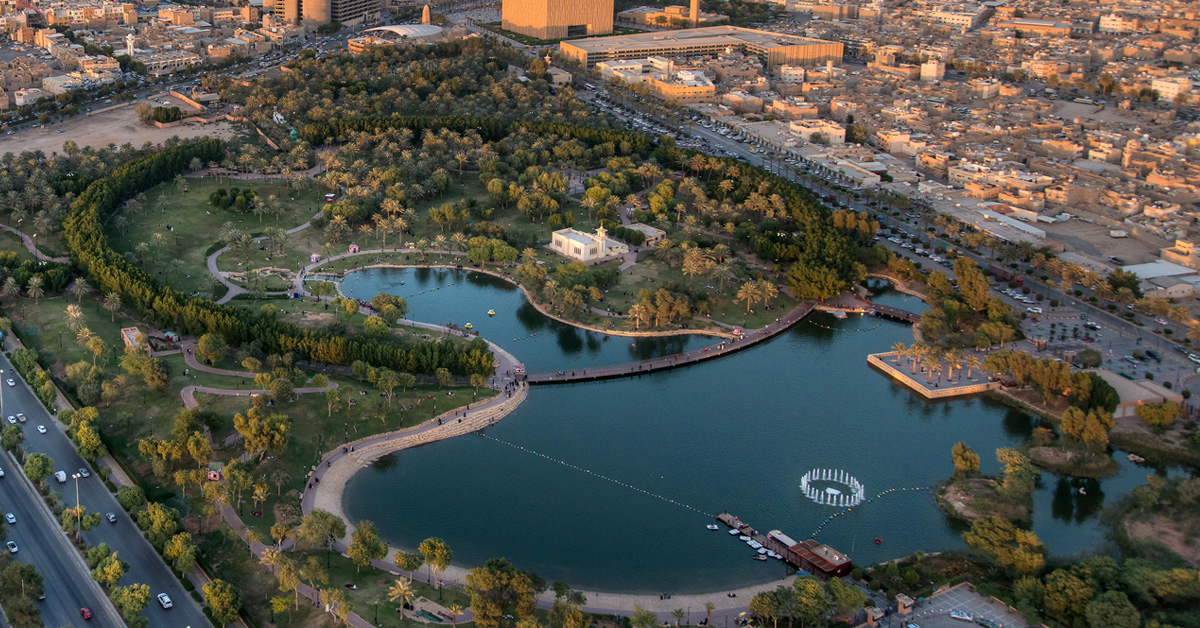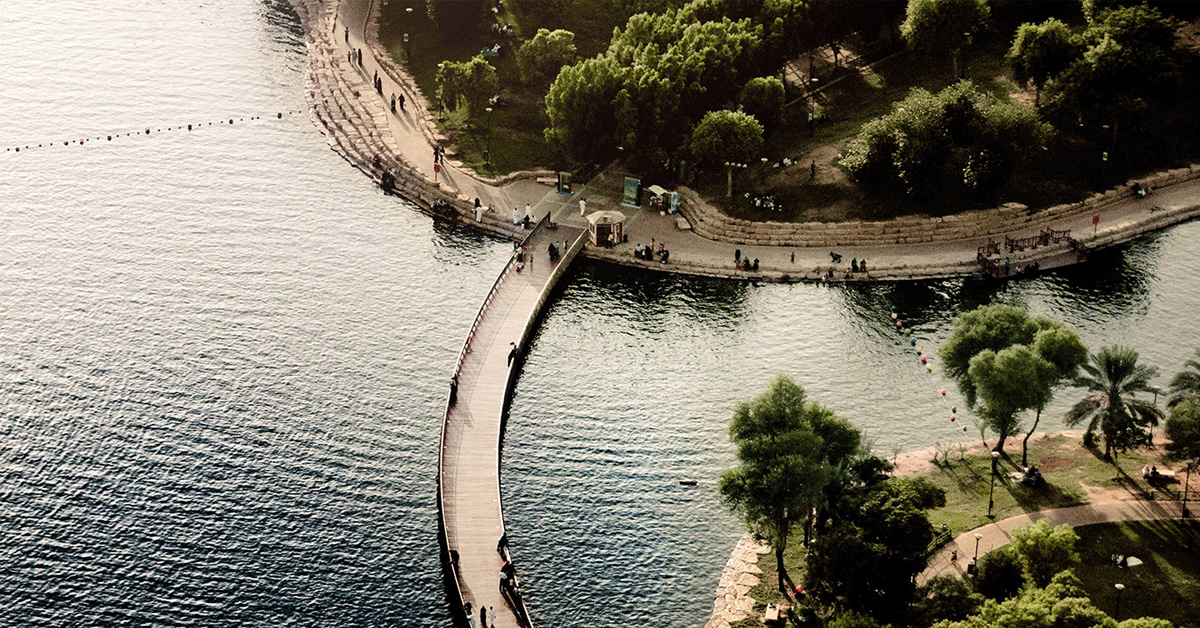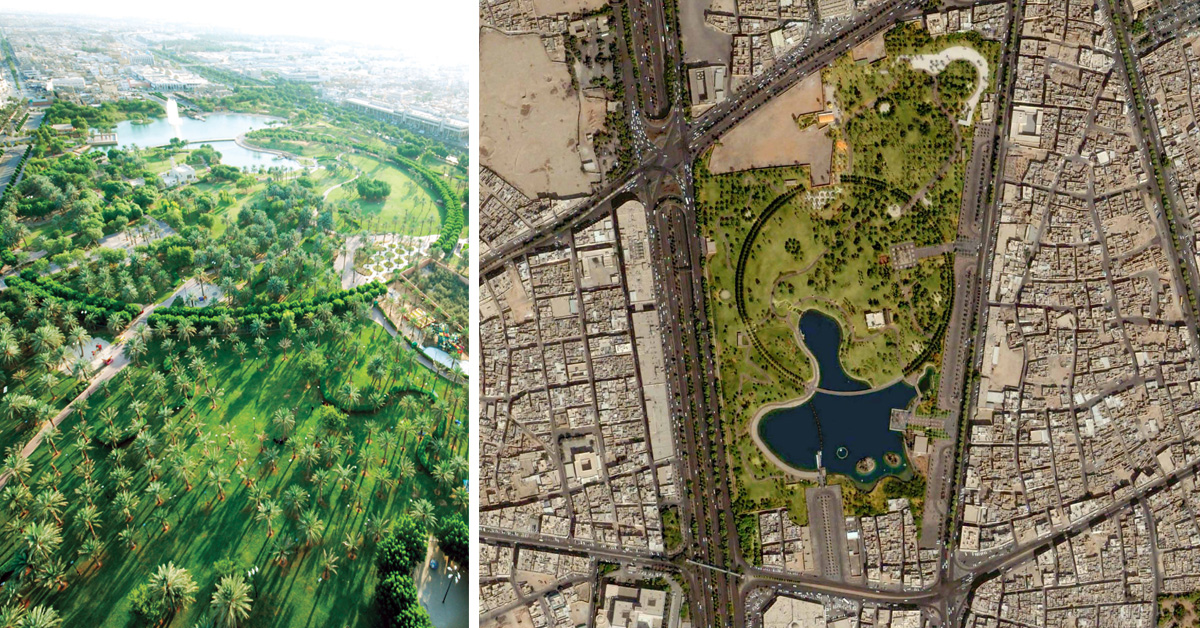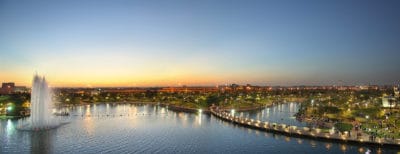 View of Salam Park, Riyadh. The site’s history is expressed in the design of the park. Photo © Ali Mubarak / Arriyadh Development Authority
View of Salam Park, Riyadh. The site’s history is expressed in the design of the park. Photo © Ali Mubarak / Arriyadh Development Authority
Salam Park, the landmark 25-hectare public space designed by Omrania with Aukett Fitzroy Robinson, offers a compelling case study in the role of urban context and heritage issues in landscape architecture.
Salam Park is not just a “green space” in the center of Riyadh, but a reservoir of history and a catalyst for urban renewal. The park is rich in history. Long cultivated as a date farm by the royal family, the site symbolizes Riyadh’s origins as a flourishing oasis town endowed with the precious resource of water. A palace, a mosque, and various service buildings also occupied the site.

The park’s 140,000-cubic-meter lake is fed in part by recycled municipal water. Photo © Ali Al Mubarak / Arriyadh Development Authority
In redesigning the site as a public park, Omrania and Aukett Fitzroy Robinson sought to retain and highlight its heritage. The original grove was not only preserved, but enlarged with additional trees to provide a shaded picnic area. The historic mosque, too, was conserved and illuminated at night. New structures in the park display a mix of traditional and modern architectural character, bridging old and new periods, and enabling the park to host a range of cultural events, public ceremonies, and social and recreational activities organized by residents.

The lakeside promenades and circular bridge pathway are among the park’s popular attractions. Photo © Andrew shenouda
Related: Salam Park — Activating the Landscape
In addition, Salam Park has contributed to the revitalization of the city center. An important design objective was to link the park to the surrounding urban fabric — including the nearby Grand Mosque of Riyadh, the historic Masmak Fort, and the historic quarter. For this reason, the park’s three main entrances are located at convenient access points relative to roads, parking, and planned Metro stations. The main paths of the park connect directly to popular attractions inside the park, such as the palm-shaded platform overlooking the lake, the popular boat pier, and the plaza that is frequently used for events and activities.

An important design objective was to link the park to the surrounding urban fabric. Photo © Ali Al Mubarak / Arriyadh Development Authority
Salam Park is also connected to the pulse of the city through its sophisticated water system. Most visitors do not realize that the park’s 140,000-cubic-meter lake is fed by groundwater and treated graywater recycled from the municipal treatment plant. Since subterranean infrastructure in Riyadh must be protected from excess pressure due to the high groundwater table, the diversion of groundwater into the park’s reservoirs alleviates hydrostatic pressure on tunnels and other substructures along King Fahad Road. These engineering works make the park a sustainable component of the growing, modern metropolis.
These are just a few of the ways in which the park brings together a sense of the past, present, and future in the urban landscape.








